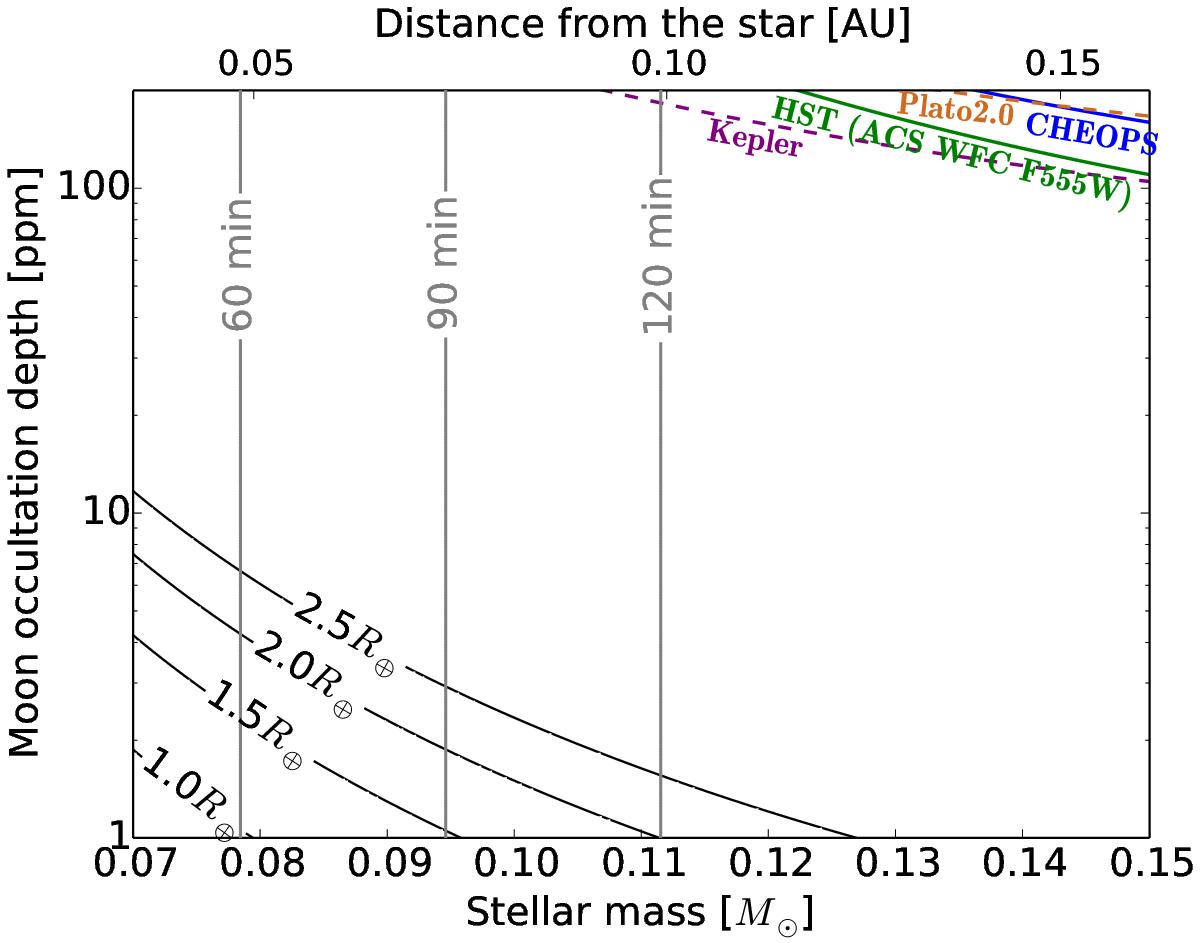Fig. 5

Radius of icy moons around different late-type stars with a given MO depth. The moon’s geometric albedo was set to Ag = 1.38 in each case (according to the reflectance of ice in the V photometric band), and the distance from the star is at the snowline, that is calculated from Eq. (16), and indicated in the top axis, too. Brown, blue, green and purple curves indicate the estimated photon noise levels with 5σ confidence of PLATO 2.0, CHEOPS, HST and Kepler, respectively. The dashed curves for PLATO 2.0 and Kepler indicate that these are survey missions in contrast with the HST and CHEOPS observatories. Grey vertical lines indicate the 60, 90 and 120 min MO duration contours for a moon in circular orbit around a Neptune-mass planet.
Current usage metrics show cumulative count of Article Views (full-text article views including HTML views, PDF and ePub downloads, according to the available data) and Abstracts Views on Vision4Press platform.
Data correspond to usage on the plateform after 2015. The current usage metrics is available 48-96 hours after online publication and is updated daily on week days.
Initial download of the metrics may take a while.


